Install from ISO-image¶
StaffCop Server installation represents installation of Ubuntu Server from an ISO-image containing StaffCop Server package and the required dependencies, such as PostgreSQL, Nginx. The steps described below are common for installation on a PC or a virtual machine and generally don’t really differ from usual Ubuntu installation.
You may require installation of a virtualization environment, such as VirtualBox or VmWare, before installing from ISO-image.
For installation you have to make sure that your PC:ref:supports virtualization flags <enable_virtualization> an that virtualbox_install is enabled in the BIOS of your CPU.
Download the latest ISO-image from this page
1. Connect your boot device with ISO-image of StaffCop Enterprise to your PC or connect the ISO-image to a virtual machine, launch PC/virtual machine and go to the OS installer. First, choose your language.
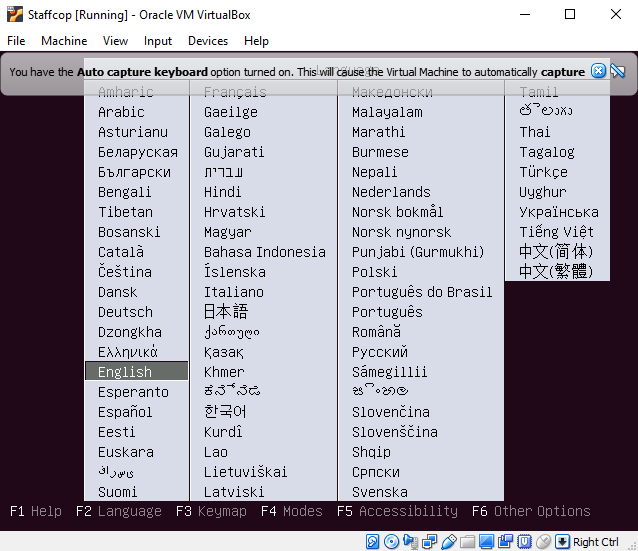
2. Choose installation - Install StaffCop Enterprise.
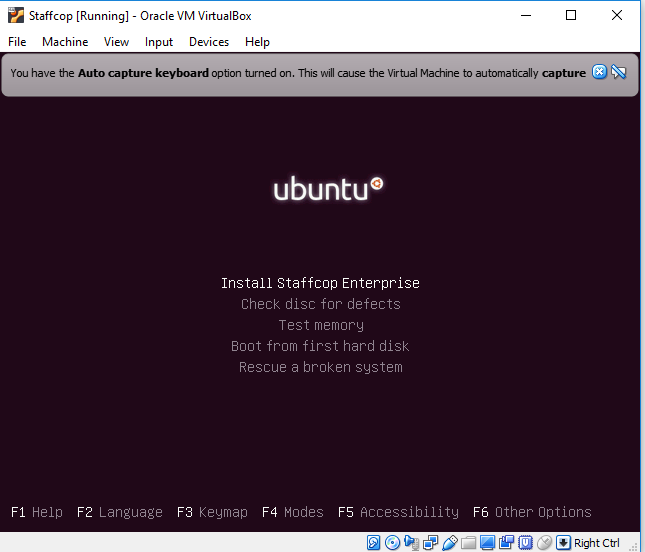
3. Choose language, keyboard layout.
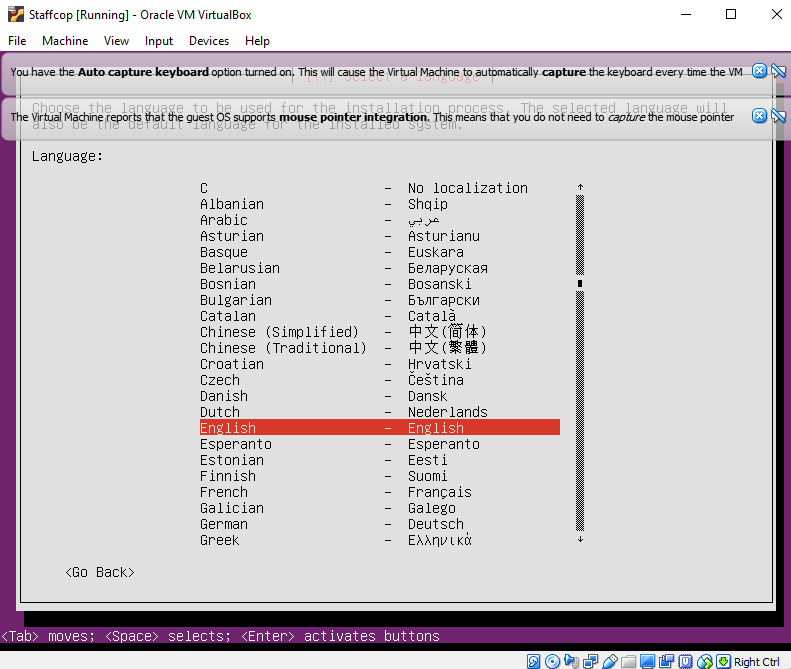
4. Specify the name of the computer and create a user account.
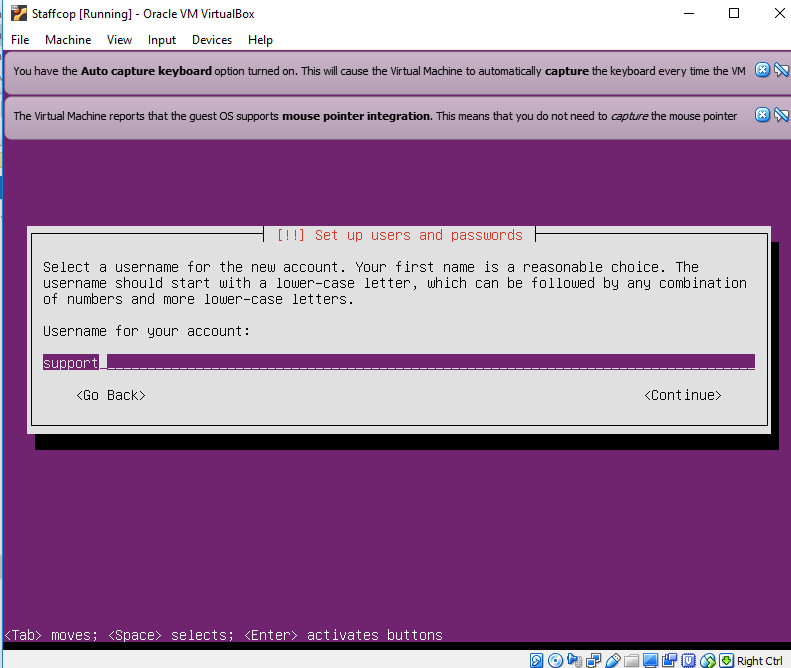
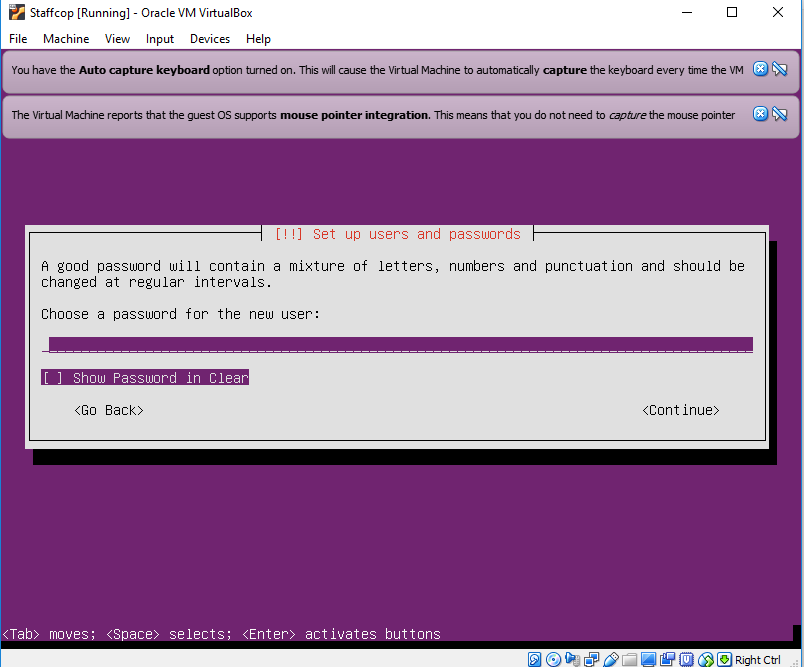
5. Specify time zone
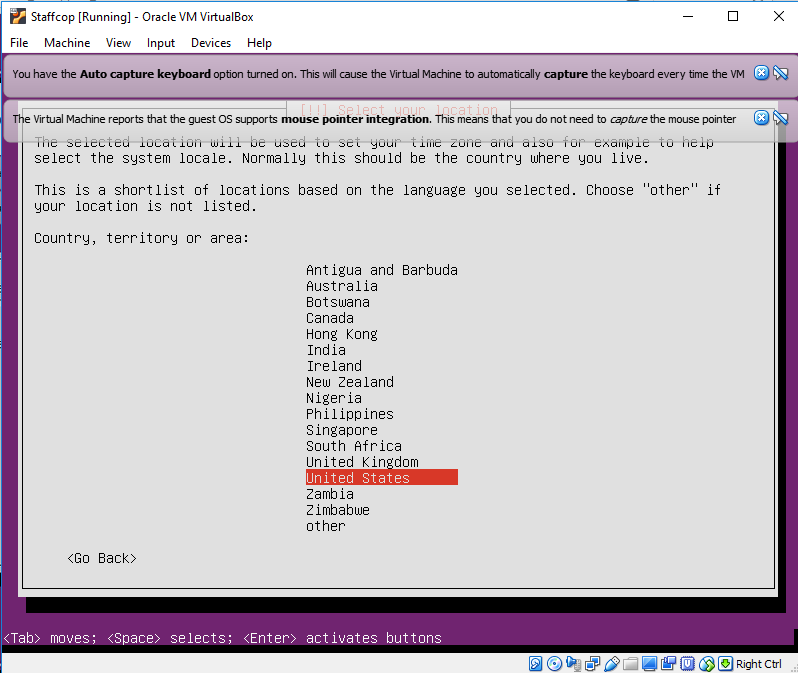
6. Reboot system (it will occur automatically).
7. Go to final steps of installation.
Note
Avoid giving SSH-access to your server from outside your corporate network. In case of necessity, use key authentication and not commonly used ssh-port to decrease the chance of exposing your server.